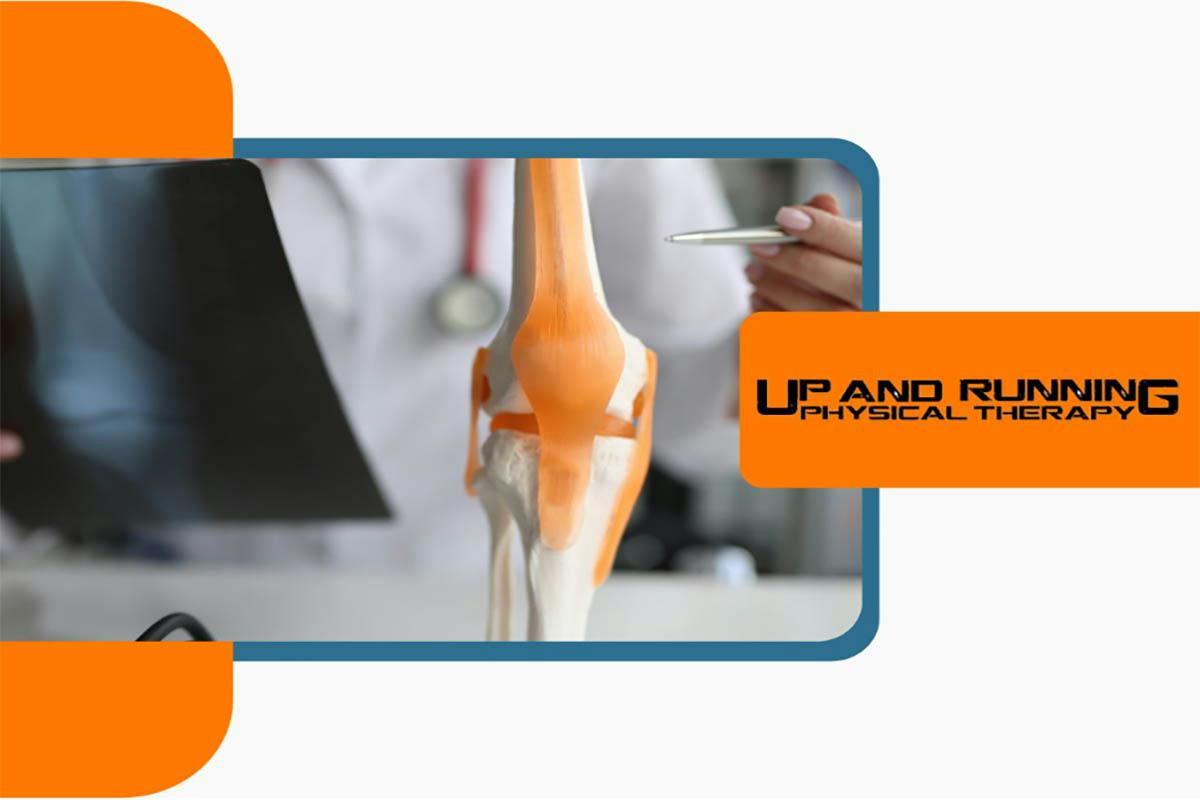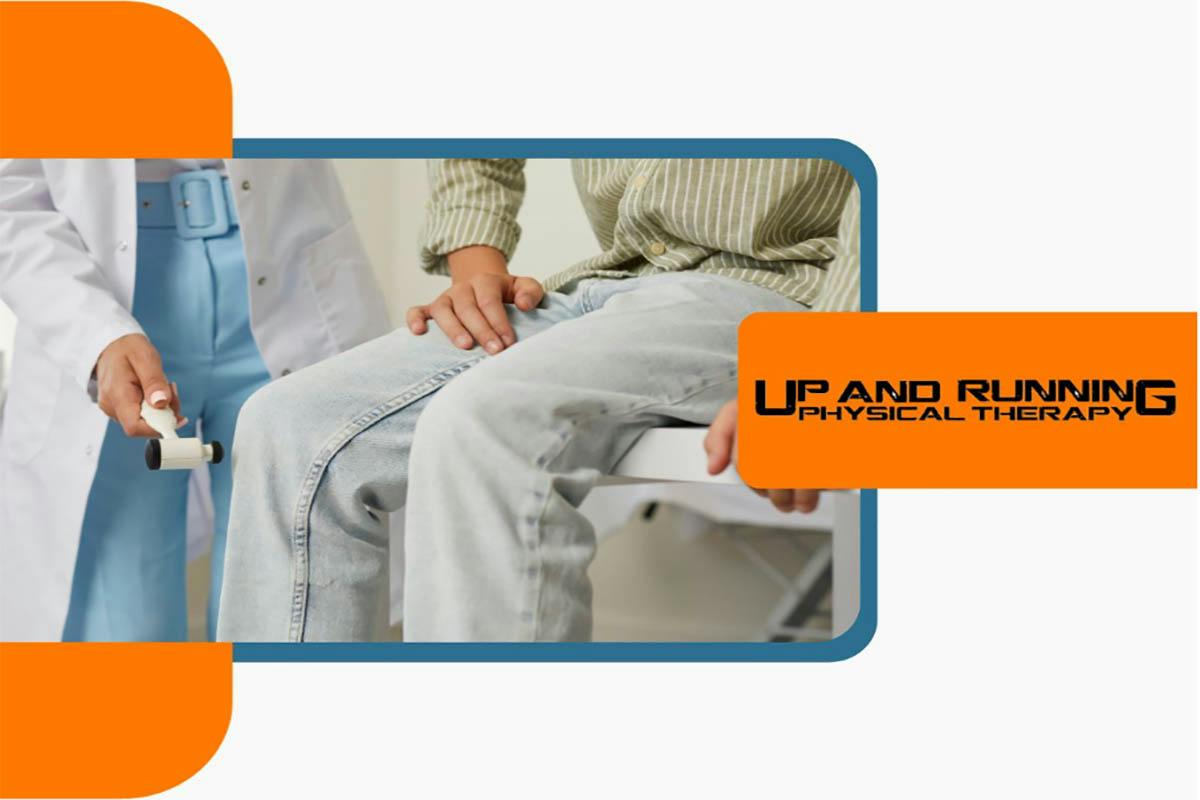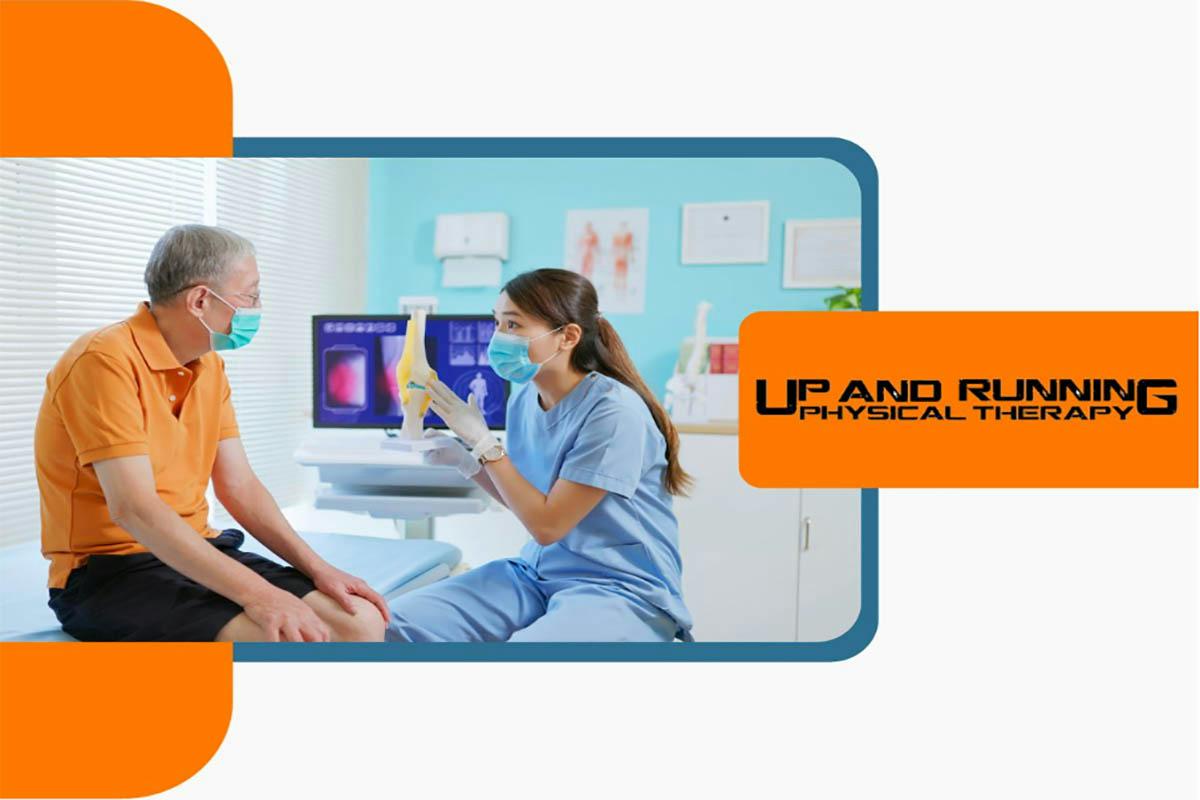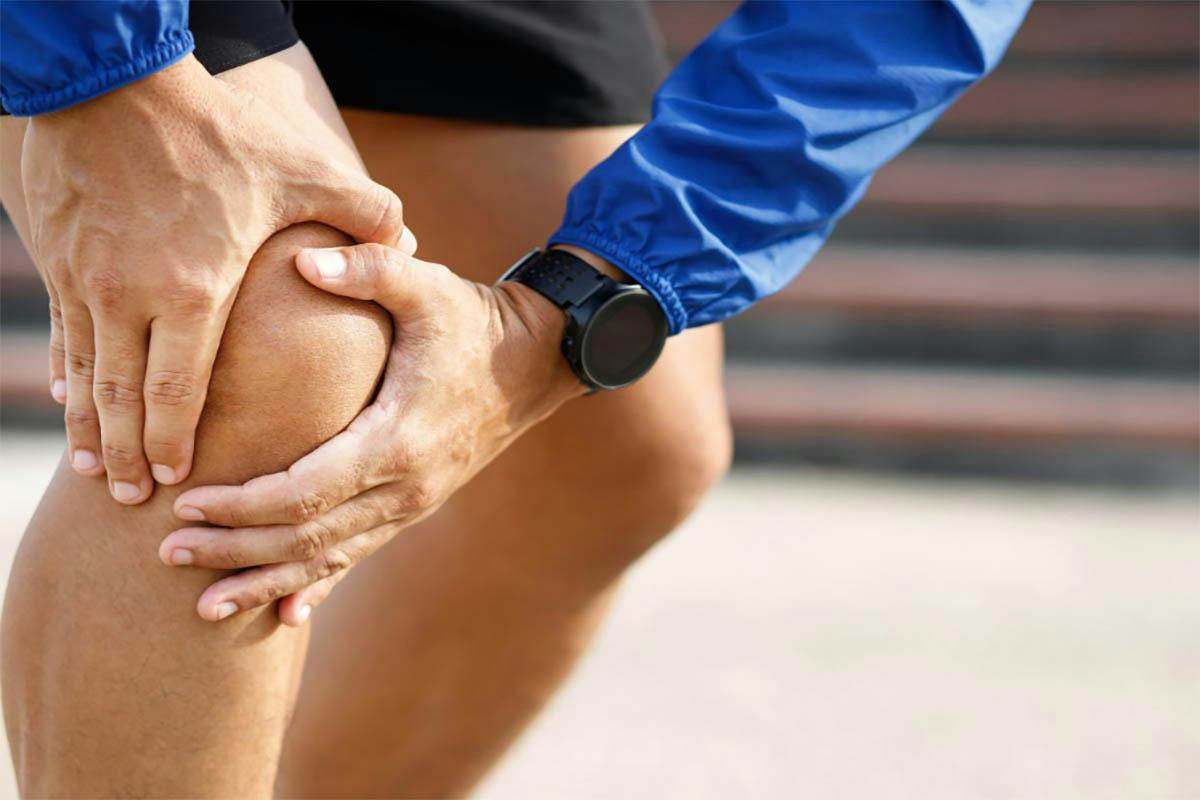Introduction
Runner’s knee, clinically known as patellofemoral pain syndrome (PFPS), is a common ailment that many runners face. Among runners, the knee is the most frequently injured area. Within the knee joint, three primary types of injuries, including patellofemoral pain syndrome, are commonly observed.
The pain and discomfort associated with a runner’s knee can hinder your love for running, but with the proper runner’s knee treatment and preventive measures coupled with running physical therapy, you can hit the pavement again with confidence.
Diagnosis of Runners Knee Pain
Runner’s knee, or patellofemoral pain syndrome, results from excessive use of knee joints impacting approximately 30% of female and 25% of male runners. It stands out as the most prevalent running-related injury.
Accurately pinpointing the source of knee pain is paramount before initiating any treatment for runner’s knee. Consulting a healthcare professional is the first crucial step in this process.
Here’s a breakdown of the diagnostic procedures involved:
Comprehensive Physical Examination: A healthcare professional will conduct a thorough physical examination focusing on the knee joint and surrounding areas. This examination may include assessing the range of motion, joint stability, and the presence of swelling or tenderness.

Medical History Inquiry: The healthcare provider will inquire about any previous knee injuries, current symptoms, and factors that might contribute to the development of a runner’s knee, such as recent changes in running intensity or footwear.

Imaging Tests: To eliminate the possibility of other underlying concerns and get a detailed view of the knee structures, imaging tests like X-rays or magnetic resonance imaging (MRI) may be recommended. X-rays can help identify bone issues, while an MRI provides a more detailed look at soft tissues like ligaments and cartilage.

Orthopedic Tests: Specific orthopedic tests may be conducted to assess the function and stability of the knee joint. These tests help the healthcare professional identify any abnormalities or weaknesses contributing to the pain.

Rule-Out Process: Since various conditions can manifest with knee pain, the diagnostic process involves ruling out other potential causes, such as ligament injuries or meniscal tears. This step ensures that the treatment plan is tailored specifically to address the underlying issue of the runner’s knee.

Causes of Runner’s Knee Pain
The knee is the most commonly affected area, accounting for over 40 percent of injuries. To effectively address and treat a runner’s knee, it’s vital to delve into the underlying causes that trigger this common ailment among runners. By understanding these factors, individuals can tailor their treatment plans to target the specific issues contributing to the pain.
Here’s an in-depth exploration of the key causes of runner’s knee:
Overuse
- Engaging in repetitive and high-impact activities, such as running long distances without adequate rest, can lead to excessive stress on the knee joint.
Improper Running Techniques
- Issues such as overpronation (excessive inward rolling of the foot) or inadequate knee alignment during running can impose additional stress on the knee joint, increasing the risk of patellofemoral pain.
Muscle Imbalances
- The quadriceps, hamstrings, and hip muscles play a crucial role in stabilizing the knee during movement.
- If these muscles are not adequately conditioned, or if there is an imbalance between them, it can lead to increased stress on the patellofemoral joint, contributing to pain.
Biomechanical Issues
- Factors such as a misaligned patella (kneecap), issues with foot arches, or leg length discrepancies can disrupt the natural movement of the knee joint, leading to irritation and pain.
Footwear Choices
- Shoes with inadequate support or those that do not match an individual’s gait can contribute to the development of a runner’s knee.
How Do I Get Back Into Running With Pain In Knees?
Getting back into running after experiencing knee pain requires a gradual and cautious approach. Focus on low-impact activities initially, incorporate strength training, and listen to your body. Seek guidance from a healthcare professional for customized medical advice regarding knee concerns.
Effectively Treating for Runner’s Knee
Effectively managing runner’s knee involves targeted stretching and exercises, specifically designed stretches for runners knee pain, to promote flexibility and strength. Incorporate the following routines into your regimen.
Rest, Ice, Compression, and Elevation (RICE)
Rest: Give your knees the time to heal by reducing or avoiding activities that exacerbate the pain. This may involve temporarily cutting back on running or choosing lower-impact exercises.
Ice: Using ice on the impacted area can aid in diminishing inflammation and alleviate pain. Ice packs or cold compresses should be applied for about 15-20 minutes at a time, several times a day.
Compression: Opting to wear a compression bandage or knee brace can offer support to the impacted joint, helping to control swelling and promote stability.
Elevation: Elevating the affected leg when resting helps reduce swelling by enabling fluids to drain away from the knee. This is particularly beneficial when combined with the other components of RICE.
Nonsteroidal Anti-Inflammatory Drugs (NSAIDs)
Non-prescription NSAIDs like ibuprofen or naproxen effectively manage pain and decrease inflammation linked to runner’s knee. It’s important to adhere to the recommended dosage and seek advice from a healthcare professional if any concerns arise or if the pain persists.
Physical Therapy
A qualified physical therapist will design a personalized exercise program to strengthen specific muscle groups, improve flexibility, and correct biomechanical issues.
Targeted exercises may include quadriceps and hamstring strengthening, hip abductor exercises, and stretches to improve overall flexibility.
Biomechanical Assessment
This may involve analyzing running gait, addressing improper foot mechanics, and adjusting running techniques.
Custom orthotics or supportive insoles may be recommended to enhance foot and knee alignment during physical activity.
Injections and Advanced Interventions
In some cases, healthcare professionals may recommend corticosteroid injections to reduce inflammation. Additionally, more advanced interventions, such as platelet-rich plasma (PRP) therapy or hyaluronic acid injections, may be considered for cases that don’t respond to conservative treatments.
How To Prevent Runner’s Knee
Preventing runner’s knee is paramount for a sustained and enjoyable running experience. Focus on these five key conservative measures to minimize the risk of developing this common ailment:
- Proper Running Form: Maintain good posture and a controlled stride to reduce stress on the knee joints, minimizing the risk of common running injuries. A mid-foot strike can help distribute impact more evenly.
- Gradual Training Progression: Avoid abrupt increases in training intensity or mileage. Gradually build up your running routine to allow your body to adapt and strengthen.
- Quality Footwear: Invest in supportive, well-fitted running shoes, including foot orthoses, that align with your foot type and running style. Regularly replace worn-out shoes to ensure proper cushioning.
- Strength Training: Incorporate strength training exercises targeting the hips, thighs, and core. A strong, balanced musculature provides crucial support for the knee joints.
- Flexibility and Stretching: Prioritize regular stretching, emphasizing dynamic stretches for the quadriceps, hamstrings, and calf muscles. Maintaining flexibility in these areas is crucial to preventing undue stress on the knees.
Stretching And Exercises For Runner’s Knee
Effectively managing runner’s knee involves targeted stretching and exercises, specifically designed stretches for runners knee pain, to promote flexibility and strength. Incorporate the following routines into your regimen.
Quadriceps Stretch: Stand on one leg, bringing your heel toward your buttocks, and gently pull your ankle towards your glutes. Hold for 15-30 seconds and switch sides.
Hamstring Stretch: Sit on the floor with one leg extended and the other foot positioned against the inner thigh. Reach towards the toes of the extended leg, maintaining the stretch for 15-30 seconds.
Hip Strengthening: Perform leg raises and hip abductor exercises to strengthen the muscles surrounding the hip joint.
Calf Stretch: Stand facing a wall with one foot forward and the other back, keeping both heels on the ground. Lean into the wall, feeling the stretch in the back leg’s calf. Hold for 15-30 seconds and switch legs.
Role of Physical Therapy in Runner’s Knee Recovery
Integrate running physical therapy featuring personalized exercises, biomechanical analysis, flexibility training, and gait correction to enhance recovery. This holistic approach, provided by Up And Running PT, cultivates resilience, flexibility, and strength, ensuring a sustainable and enjoyable running experience while effectively preventing and managing a runner’s knee. Maximize your running potential with Up And Running PT today.
Conclusion
Overcoming a runner’s knee involves a combination of proper diagnosis, targeted treatment, and preventive measures. By addressing the root causes and adopting a holistic approach to recovery, you can resume your passion for running pain-free.
FAQs
Q1: How do I get back into running with runner’s knee?
A1: Returning to running with a runner’s knee requires a gradual approach. Start with low-impact activities, incorporate strength training, and consult a healthcare professional for guidance.
Q2: Can I still run with a runner’s knee?
A2: Running with runner’s knee is not advisable during the acute phase. Rest and proper treatment are essential before gradually reintroducing running under professional guidance.
Q3: How long does runner’s knee take to recover?
A3: Recovery time varies based on the condition’s severity and treatment adherence. Mild cases may resolve in a few weeks, while more severe cases may take several months. Consistency in rehabilitation exercises is key to a faster recovery.


